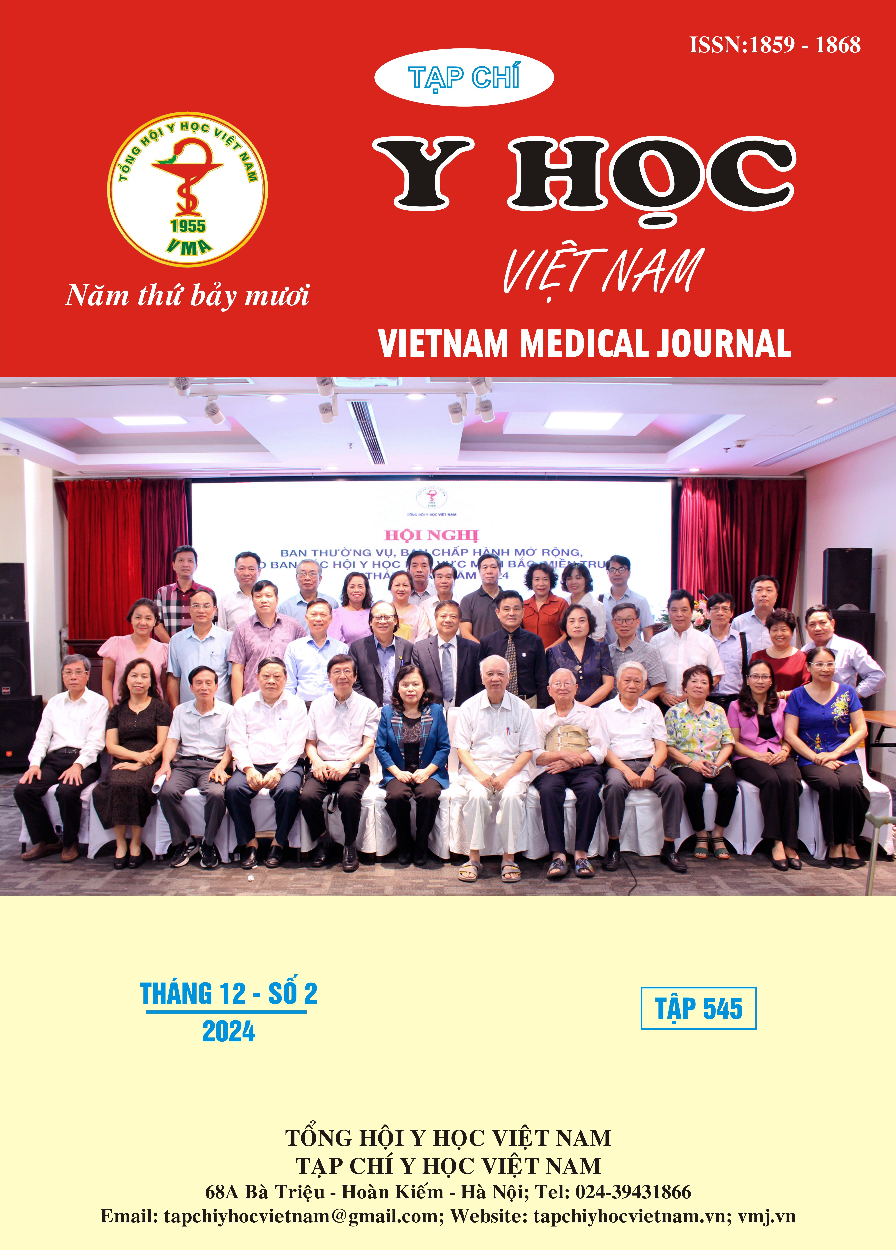INITIAL ASSESSMENT OF EMERGENCY MANAGEMENT, TREATMENT OF ACUTE BRONCHIAL ASTHMA, SEVERE AND CRITICAL BRONCHIAL ASTHMA AT THE EMERGENCY ICU DEPARTMENT OF XUAN LOC DISTRICT MEDICAL CENTER FROM 01/01/2018 TO 10/31/2018
Main Article Content
Abstract
Research objective: To evaluate the initial effectiveness of emergency treatment and management of severe and critical asthma cases at the Department of Emergency Resuscitation, Xuan Loc District Medical Center from January 1, 2018, to October 31, 2018. To derive lessons and plan more effective emergency treatments for severe and critical asthma. Method: A retrospective descriptive study with treatment and monitoring. A pre-designed survey form was used to collect information on patients with acute asthma who were treated at the Department of Emergency Resuscitation, Xuan Loc District Medical Center. Results: Of the 40 patients surveyed, 67.5% were male and 32.5% were female. The age group ≤60 years old accounted for 35%, while those >60 years old accounted for 65%. Mild acute bronchial asthma attacks made up 25%, moderate attacks 55%, and severe attacks 20%. During acute bronchial asthma attacks, the proportion of patients with low fever was not statistically significant. The incidence of cough in the age group ≤60 years old was 85.7%, which was not significantly different from the 84.6% in the >60 years old group. Respiratory muscle contraction occurred in 70% of patients during acute bronchial asthma, with no difference between the two age groups. The leukocyte count increased by 50% during acute bronchial asthma attacks, with no statistical difference between the two age groups. The percentage of polymorphonuclear leukocytes increased by 37.5%, while 62.5% did not show an increase, with no significant difference between the age groups. Corticosteroid use was not present in 57.1% of the ≤60 years old group, which was significantly higher compared to 26.9% in the >60 years old group (p<0.05). Antibiotic use during acute bronchial asthma attacks was 85%, with no difference between the age groups. Conclusion: In acute bronchial asthma, the proportion of patients with fever was low, not statistically significant. The rate of cough in the entire age group ≤60 years old accounted for 85.7%, higher than the age group >60 years old. 100% of patients had wheezing symptoms, of which wheezing was very clear in the age group >60 years old, accounting for 73.1%, significantly higher than the age group ≤60 years old, accounting for 42.9%. 100% of patients had wheezing and snoring during acute bronchial asthma attacks, accounting for a high proportion but there was no difference between the two age groups. The proportion of patients with wheezing symptoms during acute bronchial asthma attacks was 57.5%, the difference was not statistically significant between the two age groups. 100% of patients used bronchodilators, with oral administration combined with aerosol being more dominant at 52.5%, with no statistical difference between the two age groups. The rate of not using Corticoid in the age group ≤60 years old was 57.1%, higher and more significant in the age group >60 years old at 26.9% (p<0.05). Those who used antibiotics used antibiotics during acute bronchial asthma attacks at 85%, with no difference between the two age groups
Article Details
Keywords
: initial assessment, acute asthma, severe asthma.
References
2. Đỗ Ngọc Sơn (Khoa cấp cứu – BV Bạch Mai), Chẩn đoán và cấp cứu ban đầu cơn Hen phế quản.
3. Đặng Quốc Tuấn (2005), Nghiên cứu tác dụng của phương thức thở máy hỗ trợ/điều khiển và PEEP ngoài trong thở máy ở người bệnh hen phế quản nặng, Luận án Tiến sĩ Y học, Trường Đại học Y Hà Nội.
4. Nguyễn Thị Vân, Chẩn đoán và xử trí cơn hen phế quản nặng ở người lớn, Khoa Dị ứng lâm sàng – Bệnh viện Bạch Mai.
5. Nguyễn Thị Kim Chung, Đặng Quốc Tuấn, Nguyễn Thị Dụ (2006), “Nhận xét đặc điểm lâm sàng và tình hình cấp cứu cơn hen phế quản nguy kịch tại bệnh viện Bạch Mai trong thời gian từ 2000 đến 2005”, Tạp chí Y học lâm sàng bệnh viện Bạch Mai.
6. Ngô Quý Châu và cộng sự (2011), “Hen phế quản”. Trong: Bệnh hô hấp (Chủ biên: Ngô Quý Châu). Nhà xuất bản Giáo dục Việt Nam.
7. Phạm Thị Ngọc Thảo, Cơn hen phế quản nặng, Giáo trình Hồi sức cấp cứu chống độc – Nhà xuất bản Y học 2013.
8. Vũ Văn Đính, Cơn hen phế quản ác tính- Hồi sức cấp cứu, Nhà xuất bản Y học 1994.


